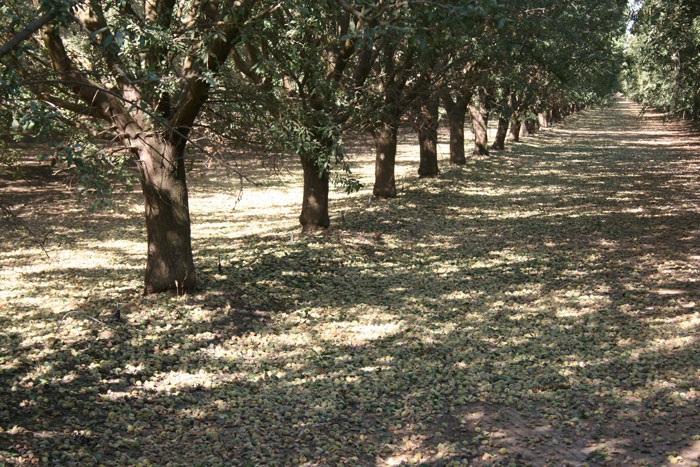November 18, 2015

The prospects of a predicted El Niño this winter no doubt is pleasing to drought-plagued growers of nut orchards, particularly almonds.
But if it comes, it won’t be without its challenges, said David Doll, a University of California farm advisor in Merced County.
In a blog on “Considerations for a Potential Wet Year,” Doll writes of the good and bad that could come with higher rainfall.
“Although weather data suggests that it may be a strong pattern, it still doesn’t mean automatic relief for the California water situation,” Doll said.
“In saying this, however, there stands a good chance that we will receive average rainfall, which means that things may be wetter through the winter months.”
This raises questions about sanitation, planting, and orchard maintenance which are often easier when it is dry, considering that operations move quickly when days are nice and orchards are accessible.
The good news about rain is that it “assists with the various aspects of orchard sanitation,” Doll said. Storms help remove leaves and mummies of the Navel orangeworm pest from trees.
Rain also helps degrade mummies once they are on the ground, which reduces over-wintering populations. It’s easier to use poles to strike down mummies if the option of heavy shaker equipment is not viable because of concerns over compacting wet soil.
Doll suggests it could be wise to begin winter shaking once a few rain events have occurred when harvest operations are complete in almonds and pistachios.
He says wet winters can be highly problematic for planting new orchards. Soil preparation is difficult in wet conditions in which too much equipment work will compact the soil, creating future issues with infiltration and tree growth.
Fields will need to be ripped, backhoed, or slip-plowed when the soil is dry, says Doll. Rainfall after those modifications of the soil can help with settling.
Post-modification leveling and disking should occur after some rain, but before the fields are too wet, he says.
Machine planting trees can be a challenge in wet years, particularly in soils that contain clay and may form clods that lead to air pockets. Hand planting will also be more challenging as the soil will be heavier.
Doll says it’s important to not create planting holes that are too small, which could create issues with root-girdling and j-rooting, where roots go downward and then upward. It’s important to spread the roots with care.
Adding water after planting helps settle the soil. It probably will take only three to five gallons per tree, which Doll said would only amount to 300 gallons per acre. The added water helps remove air pockets.
“This is an important step,” Doll said. “This past year I observed nearly 500 trees die due to farmers’ unwillingness to tank the trees after planting.”
Skimping on the watering-in step can mean long-lasting detrimental results as trees die or demand still more water because of setbacks from resulting air pockets.
While pest populations – and overwintering – may be reduced by rainfall, the rain is more likely to spread fungi, which Doll says are “rain-splashed and wind-spread.” Pruning during wet times increases risks.
He says it’s best to perform any pruning as soon as harvest is completed.
“Try to prune young trees when there is no rain in the immediate forecast,” Doll said. “Young trees can be pruned as late as full leaf expansion without any impact on tree growth.”
Fumigating soils when replanting in the middle of cold downpours “is not ideal,” Doll says. Too much soil moisture reduces fumigant movement and can also break down fumigants. Sandier soils will be easier to fumigate in wet conditions than loams or soils containing clay, the farm advisor says.
If enough winter rain is received that should mean less pumping because of reduced leaching requirements and the need for winter recharge. Rains could delay the first spring irrigation.
“Although the drought has forced many to remove crops,” Doll said, “this may be a good year to re-establish the planting.
Cover crops help reduce compaction by increasing structure and helping to reduce soil moisture.
Doll said, “This provides the ability to access the orchard after a large rain event – which is critical around bloom. It will also reduce sediment run-off. Cover crops should be seeded in the early fall once adequate soil moisture is present.”
He says it’s wise to have an El Niño backup plan and “hope that the rain begins in fall.”
You May Also Like




